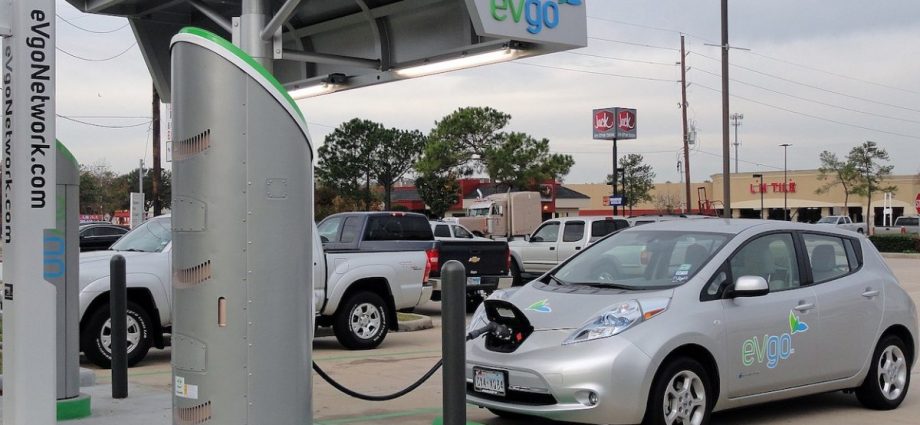
Electric vehicles are finally going mainstream. After decades of waiting for the EV revolution, more and more people worldwide are finally driving them.
Driven by strong growth in China and Europe, EV sales crossed a critical milestone in 2022 with 10% of the global vehicle market share. As more governments, large and small, look to promote electric-vehicle usage to combat climate change, the sector should continue to take market share in the short term. The US state of California has even mandated that all new cars sold must be electric or hybrid by 2035.
The explosion in electric-vehicle usage comes down to simple economics, but that could also end up being the sector’s undoing.
One of the world’s most recognizable electric-vehicle companies, Tesla, started 2023 with deep price cuts to its most popular cars. The company cut prices of its flagship offerings by up to a fifth across the US and Europe in response to cooling market demand spurred by the global economic slowdown and more competition from other brands, especially in China.
The price cuts were also in response to falling supply-chain costs from the Covid-19 pandemic era.
China, one of the world’s fastest-growing markets for EVs, accounts for nearly two-thirds of global sales. As a result there has been a boom in domestic Chinese EV manufacturing that could soon result in Chinese EVs making inroads in the European and North American markets.
China’s emergence as a key EV market highlights the hidden costs of the EV revolution. While consumers have long been concerned by the cost and viability of owning an electric vehicle, the actual costs to the planet have been glossed over in the public imagination.
One glaring challenge is the increased carbon debt of electric-car usage in colder and more cloudy climates. The unavoidable reality is that electric cars are only as clean as their energy supplies.
In markets where renewable energy isn’t fully utilized to power EV charging stations, the power comes from carbon-dirty sources such as coal and natural gas. This raises the carbon debt of an electric vehicle dramatically, which goes against the general tone of electric vehicles.
Then there is the issue of underdeveloped infrastructure. Large parts of the world where renewable energy is abundant lack the necessary infrastructure to kickstart their own electric-vehicle revolution. Countries like South Africa, though blessed with consistent wind and solar energy reserves, have virtually no infrastructure to support electric vehicles.
There are notable bright spots. As part of Abu Dhabi Sustainability Week, Regency and EVGateway unveiled a partnership to deploy 10,000 EV charging stations throughout the United Arab Emirates by 2030. Given the country’s nearly endless solar energy reserves, the UAE could soon look like a pilot project for the clean use of electric cars.
The rest of the Middle East and North Africa (MENA) are prime for electric vehicles given how much sunshine they get through the year.
Yet there is another roadblock to more widespread usage. Electric vehicles require significant amounts of minerals such as graphite, nickel, cobalt and lithium that traditional cars don’t need. Many of these minerals are used in the batteries and microchips that make these vehicles function. The challenge is extracting these minerals and how much supply there is on the planet.
Many of these minerals are only available in select countries. In some countries, the extraction infrastructure is lacking, especially compared with the ability to drill for oil and other hydrocarbons. If the infrastructure were there, the question would then shift to the amount of minerals in the ground. Thus greater expansion of electric cars to new markets could translate to serious shortages of vital minerals.
If South Africa, for example, decided to make a significant push toward electric vehicles and devoted state resources to the infrastructure challenges, it would put a strain on the mining of vital minerals like lithium. Put simply, there isn’t the global infrastructure to support the large-scale mining required for a massive expansion of electric vehicles.
Some mineral-producing countries are taking aggressive actions to protect their natural resources. Last month, Zimbabwe banned the export of raw lithium outside its borders. The southern African nation is home to the world’s sixth-largest known lithium reserves, and the move could signal a new wave of resource nationalism.
Falling prices for electric vehicles in the West will mean new drivers. The sector is growing exponentially, which is both a good and a bad thing.
Now that electric vehicles are a viable alternative to traditional cars, it’s time for a fresh conversation about the real impact of this new approach to transport. If we delude ourselves to thinking that electric vehicles by their essence will help climate change, we are in for a rude surprise.
Like any new technology, EVs bring a host of opportunities and challenges. It’s time to think clearly about those challenges before we end up doing more harm than good.
This article was provided by Syndication Bureau, which holds copyright.

